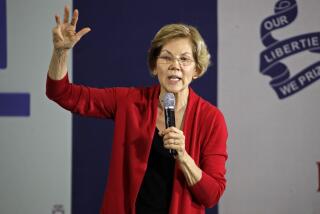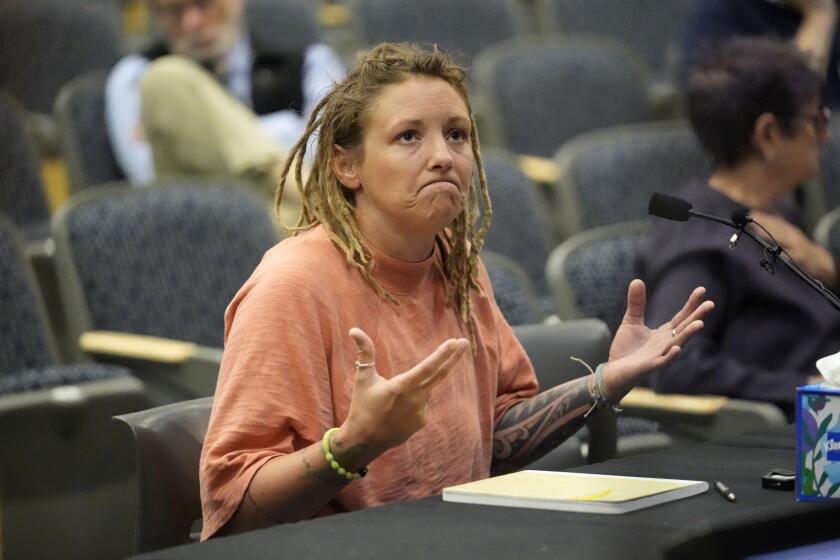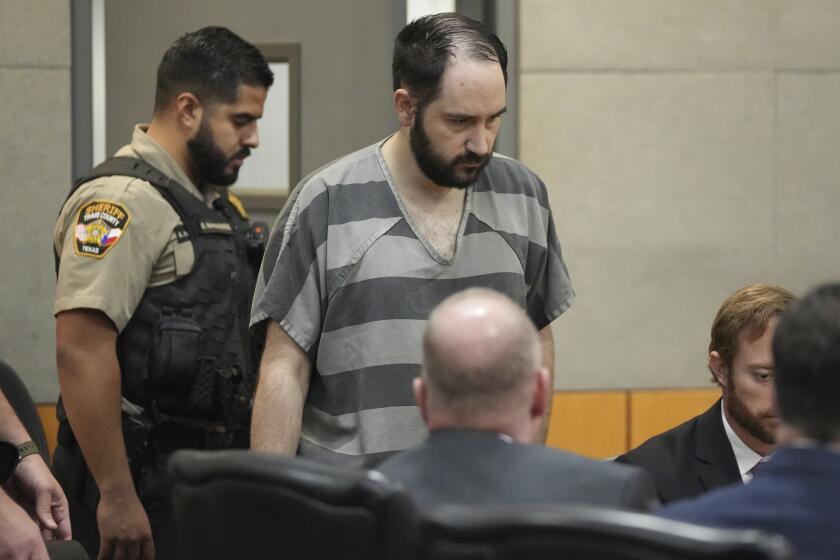CHIP Could Be the Patch Bush Needs to Repair the Health Care Safety Net
On a gray morning early last week, the waiting room of the Morris Heights Health Center in this South Bronx neighborhood looked like a kindergarten. There were children everywhere--playing quietly on the floor, scampering through the narrow aisles of chairs. The room buzzed with an exuberant din.
The full house testified to the success of the Children’s Health Insurance Program that Congress passed in 1997 to guarantee health coverage to children in working-poor families.
States have displayed uneven commitments to implementing the program, which is jointly funded with federal and state dollars. But even so, more than 3.3 million children now receive coverage under CHIP nationwide. Here in Morris Heights, the program has allowed the clinic “to see and treat thousands of children we hadn’t seen before,” said Dr. Wanda McCoy, the center’s vice president for medical affairs.
Now the opportunity may be approaching to build on CHIP’s success to cover the largest remaining group of Americans without health insurance: low-income working adults.
Morris Heights demonstrates the challenge. When the clinic opened 20 years ago, this neighborhood was desolate, with welfare more common than work. But at least those on welfare were guaranteed health insurance through Medicaid, the joint state-federal program that covers the very poorest Americans.
Now, massive immigration and welfare reform have revitalized this neighborhood; in the morning the streets bustle with men and women heading off to work. The irony is that more work has meant less health insurance, because so many people here hold low-wage jobs that don’t provide coverage.
It’s the same in communities across the country. Of the 42 million Americans nationwide without health insurance, more than 70% come from families with at least one full-time worker, according to the Kaiser Commission on Medicaid and the Uninsured. A paycheck is now most often the ticket of entry into the ranks of the uninsured.
In its brief life, CHIP has shown it’s possible to reach those working families at a reasonable cost. The states most committed to the program--New York prominent among them--have built an efficient infrastructure of insurers, health maintenance organizations and community clinics (most of them, like Morris Heights, federally funded) to deliver care that generally has received rave reviews from patients and providers alike.
It would take little to make this infrastructure more available to working-poor adults--many of whom are sitting with their children in the waiting rooms anyway. “We have the capacity,” McCoy says. “We have the skills; we have the people; we have the trust of the community; we have the providers.”
All that’s missing is the money.
Community health clinics such as Morris Heights treat adults who need care, whether or not they have insurance. But the lack of insurance for adults still carries a high price. Without insurance adults rarely come in until they are very sick, McCoy says. And while the centers receive some federal subsidies to cover the uninsured, the dollars rarely go far enough.
What’s the answer? From divergent points on the political spectrum, a growing chorus is trumpeting the same solution: Expand CHIP to adults, probably to the parents of eligible children as a first step.
This idea is advancing on several fronts. CHIP originally was passed after several states caught Washington’s attention by launching their own initiatives to cover children of the working poor whose families earned too much to receive Medicaid. Now the same pattern could be recurring as states expand coverage to low-income adults. Later this year, under Republican Gov. George Pataki, New York is scheduled to launch one of the nation’s most ambitious efforts: a statewide program modeled on CHIP that could provide coverage to as many as 600,000 working poor adults.
In Washington, a truly odd couple of interest groups are also pushing the idea. Families USA, a liberal health advocacy group, and the Health Insurance Assn. of America, the trade association for the biggest insurers, have crafted a plan that would expand Medicaid or CHIP to adults earning up to twice the poverty level, about $30,000 annually for a family of three. This week, a bipartisan coalition led by Sens. Olympia J. Snowe (R-Maine) and Edward M. Kennedy (D-Mass.) will introduce a similar plan, with a price tag of about $5 billion a year.
President Bush isn’t hostile to covering adults under CHIP, but his opening position is that states can do it with the money already available for children. He’s also proposing a tax credit that would give low-income families up to $2,000 a year to buy health insurance on the private market. Over the next 10 years, Bush’s plan would cost about as much as expanding CHIP.
Many advocates for the uninsured are dubious the tax credit is a better way to spend the money. For one thing, the average family health insurance plan today costs about $6,000 a year, far more than Bush’s credit; McCoy expresses a common fear that most low-income families couldn’t afford to cover the balance.
The credit also may not be “the most efficient way of expanding coverage,” said Chip Kahn, president of the health insurance association. Because they buy in bulk, state governments can negotiate cheaper insurance rates through CHIP than individuals can get on their own. And there may be no effective way to prevent the credit from being used by workers who already have insurance, said Emory University health policy professor Kenneth E. Thorpe, a former Clinton administration official. Taken together, Thorpe calculates, these factors mean that for each new worker provided with insurance, the tax credit would cost Washington more than twice as much as expanding CHIP.
The tax credit isn’t without value. It likely would reach some low-income workers who recoil from any government program (even one targeted at working families) as a form of welfare. And politically, Kahn noted, any compromise that can draw Bush’s signature probably will need to combine some form of the tax credit with a CHIP expansion.
Negotiating the details of such a deal is what legislators get paid for. The larger point is that Washington now has the money to reach more of the uninsured, and, in CHIP, a successful model for doing so. If Bush and Congress truly want to start patching the health care safety net, it may be time for CHIP to grow up.
*
See current and past Brownstein columns on The Times’ Web site at: https://www.latimes.com/brownstein.
More to Read
Start your day right
Sign up for Essential California for news, features and recommendations from the L.A. Times and beyond in your inbox six days a week.
You may occasionally receive promotional content from the Los Angeles Times.






